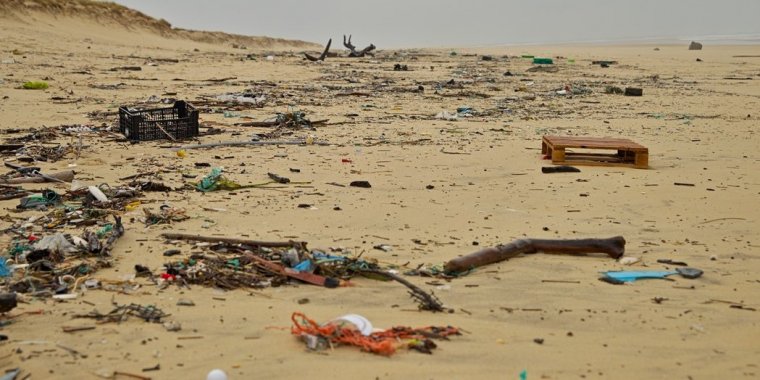| News / Science News |
Microplastic pollution adds to oceans’ problems
The harmful effects of microplastics on the marine environment are widely documented. But now a new study says the tiny plastic debris acts as a carrier for pollutants resistant to environmental degradation, adding to the risks to animal and human health.

Plastic pollution. Photo: Andrei Ciobanu/Unsplash
Microplastics are defined as pieces of plastic less than five millimetres in length, and include remnants of larger plastic items that have degraded, as well as polyethylene microbeads used in some health and beauty products.
The plastic pellets, often derived from synthetic clothing, vehicle tyres, bags, cups and other discarded waste, are commonly found on beaches and in oceans around the world. A team of Brazilian researchers studied samples of microplastics collected along a 39-kilometre stretch of the Paraná State coastline, in southern Brazil.
Attached to the debris, they identified persistent organic pollutants -- very stable compounds resistant to chemical and biological degradation -- such as polychlorinated biphenyls (PCBs), and polycyclic aromatic hydrocarbons (PAHs). These pollutants stem from chemical processes linked to oil exploration and transport, and are formed when coal, oil, wood, or tobacco is burned.
When marine organisms ingest these microplastics, the pollutant particles get detached from them, contaminating organisms' tissues and harming their nervous and hormonal systems.
The resins contained in microplastics are able to attract pollutants, especially poisonous organic compounds. By doing so, these plastic pellets become sponges for dirt, acting as vectors of the organic compounds, spreading pollution of marine wildlife, and reducing their growth, reproduction and mobility.
A zooplankton that consumes a microscopic piece of microplastic filled with PAHs may be eaten by a larger organism, which in turn feeds others of increasing size until the pollutant reaches larger predators fished and consumed by humans.
Plastic pollution is a devastating problem for marine life, with the UN Environment Programme estimating that about 8 million tonnes of plastic waste is dumped into the seas every year. About 90 per cent of the plastics that filter into the oceans come from just 10 of the world’s rivers which serve as conduits from urban areas.
Although plastic waste per person is highest in high-income countries, most mismanaged waste tends to arise from low-to-middle-income countries, where waste management systems have not kept pace with growing populations and industrialisation. (scidev.net)
YOU MAY ALSO LIKE



